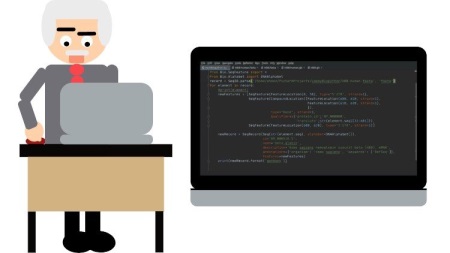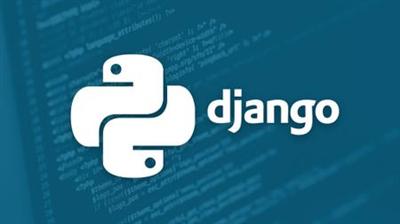Last updated 8/2024
MP4 | Video: h264, 1920×1080 | Audio: AAC, 44.1 KHz
Language: English | Size: 11.2 GB | Duration: 22h 27m
The skills you need to become a BI Analyst – Statistics, Database theory, SQL, Tableau – Everything is included
What you’ll learn
Become an expert in Statistics, SQL, Tableau, and problem solving
Boost your resume with in-demand skills
Gather, organize, analyze and visualize data
Use data for improved business decision-making
Present information in the form of metrics, KPIs, reports, and dashboards
Perform quantitative and qualitative business analysis
Analyze current and historical data
Discover how to find trends, market conditions, and research competitor positioning
Understand the fundamentals of database theory
Use SQL to create, design, and manipulate SQL databases
Extract data from a database writing your own queries
Create powerful professional visualizations in Tableau
Combine SQL and Tableau to visualize data from the source
Solve real-world business analysis tasks in SQL and Tableau
Requirements
No prior experience is required. We will start from the very basics
You’ll need to install MySQL, Tableau Public, and Anaconda. We will show you how to do it step by step
Microsoft Excel 2003, 2010, 2013, 2016, or 365
Description
Hi! Welcome to The Business Intelligence Analyst Course, the only course you need to become a BI Analyst. We are proud to present you this one-of-a-kind opportunity. There are several online courses teaching some of the skills related to the BI Analyst profession. The truth of the matter is that none of them completely prepare you.Our program is different than the rest of the materials available online. It is truly comprehensive. The Business Intelligence Analyst Course comprises of several modules: Introduction to Data and Data Science Statistics and Excel Database theory SQL Tableau SQL + Tableau These are the precise technical skills recruiters are looking for when hiring BI Analysts. And today, you have the chance of acquiring an invaluable advantage to get ahead of other candidates. This course will be the secret to your success. And your success is our success, so let’s make it happen! Here are some more details of what you get with The Business Intelligence Analyst Course: Introduction to Data and Data Science – Make sense of terms like business intelligence, traditional and big data, traditional statistical methods, machine learning, predictive analytics, supervised learning, unsupervised learning, reinforcement learning, and many more; Statistics and Excel – Understand statistical testing and build a solid foundation. Modern software packages and programming languages are automating most of these activities, but this part of the course gives you something more valuable – critical thinking abilities; Database theory – Before you start using SQL, it is highly beneficial to learn about the underlying database theory and acquire an understanding of why databases are created and how they can help us manage data SQL – when you can work with SQL, it means you don’t have to rely on others sending you data and executing queries for you. You can do that on your own. This allows you to be independent and dig deeper into the data to obtain the answers to questions that might improve the way your company does its business Tableau – one of the most powerful and intuitive data visualization tools available out there. Almost all large companies use such tools to enhance their BI capabilities. Tableau is the #1 best-in-class solution that helps you create powerful charts and dashboards Learning a programming language is meaningless without putting it to use. That’s why we integrate SQL and Tableau, and perform several real-life Business Intelligence tasks Sounds amazing, right? Our courses are unique because our team works hard to: Pre-script the entire content Work with real-life examples Provide easy to understand and complete explanations Create beautiful and engaging animations Prepare exercises, course notes, quizzes, and other materials that will enhance your course taking experience Be there for you and provide support whenever necessary We love teaching and we are really excited about this journey. It will get your foot in the door of an exciting and rising profession. Don’t hesitate and subscribe today. The only regret you will have is that you didn’t find this course sooner!
Overview
Section 1: Part 1: Introduction
Lecture 1 What Does the Course Cover
Lecture 2 Download All Resources
Section 2: Intro to Data and Data Science – The Different Data Science Fields
Lecture 3 Why Are There So Many Business and Data Science Buzzwords?
Lecture 4 Analysis vs Analytics
Lecture 5 Intro to Business Analytics, Data Analytics, and Data Science
Lecture 6 Adding Business Intelligence (BI), Machine Learning (ML), and AI to the Picture
Lecture 7 An Overview of our Data Science Infographic
Section 3: Intro to Data and Data Science – The Relationship between Different Fields
Lecture 8 When are Traditional data, Big Data, BI, Traditional Data Science and ML applied
Section 4: Intro to Data and Data Science – What is the Purpose of each Data Science Field
Lecture 9 Why do we Need each of these Disciplines?
Section 5: Intro to Data and Data Science – Common Data Science Techniques
Lecture 10 Traditional Data: Techniques
Lecture 11 Traditional Data: Real-life Examples
Lecture 12 Big Data: Techniques
Lecture 13 Big Data: Real-life Examples
Lecture 14 Business Intelligence (BI): Techniques
Lecture 15 Business Intelligence (BI): Real-life Examples
Lecture 16 Traditional Methods: Techniques
Lecture 17 Traditional Methods: Real-life Examples
Lecture 18 Machine Learning (ML): Techniques
Lecture 19 Machine Learning (ML): Types of Machine Learning
Lecture 20 Machine Learning (ML): Real-life Examples
Section 6: Intro to Data and Data Science – Common Data Science Tools
Lecture 21 Programming Languages & Software Employed in Data Science – All the Tools Needed
Section 7: Intro to Data and Data Science – Data Science Career Paths
Lecture 22 Data Science Job Positions: What do they Involve and What to Look out for?
Section 8: Intro to Data and Data Science – Dispelling Common Misconceptions
Lecture 23 Dispelling common Misconceptions
Section 9: Part 2: Statistics – Population and Sample
Lecture 24 Population vs sample
Section 10: Statistics – Descriptive Statistics
Lecture 25 Types of Data
Lecture 26 Levels of Measurement
Lecture 27 Categorical Variables – Visualization Techniques
Lecture 28 Categorical Variables Exercise
Lecture 29 Numerical Variables – Frequency Distribution Table
Lecture 30 Numerical Variables Exercise
Lecture 31 The Histogram
Lecture 32 Histogram Exercise
Lecture 33 Cross Table and Scatter Plot
Lecture 34 Cross Tables and Scatter Plots Exercise
Lecture 35 Mean, median and mode
Lecture 36 Mean, Median and Mode Exercise
Lecture 37 Skewness
Lecture 38 Skewness Exercise
Lecture 39 Variance
Lecture 40 Variance Exercise
Lecture 41 Standard Deviation and Coefficient of Variation
Lecture 42 Standard Deviation and Coefficient of Variation Exercise
Lecture 43 Covariance
Lecture 44 Covariance Exercise
Lecture 45 Correlation Coefficient
Lecture 46 Correlation Coefficient Exercise
Section 11: Statistics – Practical Example: Descriptive Statistics
Lecture 47 Practical Example
Lecture 48 Practical Example Exercise
Section 12: Statistics – Inferential Statistics Fundamentals
Lecture 49 Introduction
Lecture 50 What is a Distribution
Lecture 51 The Normal Distribution
Lecture 52 The Standard Normal Distribution
Lecture 53 The Standard Normal Distribution Exercise
Lecture 54 Central Limit Theorem
Lecture 55 Standard error
Lecture 56 Estimators and Estimates
Section 13: Statistics – Inferential Statistics: Confidence Intervals
Lecture 57 What are Confidence Intervals?
Lecture 58 Confidence Intervals; Population Variance Known; z-score
Lecture 59 Confidence Intervals; Population Variance Known; z-score Exercise
Lecture 60 Confidence interval clarifications
Lecture 61 Student’s T Distribution
Lecture 62 Confidence Intervals; Population Variance Unknown; t-score
Lecture 63 Confidence Intervals; Population Variance Unknown; t-score Exercise
Lecture 64 Margin of Error
Lecture 65 Confidence intervals. Two means. Dependent samples
Lecture 66 Confidence intervals. Two means. Dependent samples Exercise
Lecture 67 Confidence intervals. Two means. Independent samples (Part 1)
Lecture 68 Confidence intervals. Two means. Independent samples (Part 1) Exercise
Lecture 69 Confidence intervals. Two means. Independent samples (Part 2)
Lecture 70 Confidence intervals. Two means. Independent samples (Part 2) Exercise
Lecture 71 Confidence intervals. Two means. Independent samples (Part 3)
Section 14: Statistics – Practical Example: Inferential Statistics
Lecture 72 Practical Example: Inferential Statistics
Lecture 73 Practical Example: Inferential Statistics Exercise
Section 15: Statistics – Hypothesis Testing
Lecture 74 The Null vs Alternative Hypothesis
Lecture 75 Further Reading on Null and Alternative Hypothesis
Lecture 76 Rejection Region and Significance Level
Lecture 77 Type I Error and Type II Error
Lecture 78 Test for the Mean. Population Variance Known
Lecture 79 Test for the Mean. Population Variance Known Exercise
Lecture 80 p-value
Lecture 81 Test for the Mean. Population Variance Unknown
Lecture 82 Test for the Mean. Population Variance Unknown Exercise
Lecture 83 Test for the Mean. Dependent Samples
Lecture 84 Test for the Mean. Dependent Samples Exercise
Lecture 85 Test for the mean. Independent samples (Part 1)
Lecture 86 Test for the mean. Independent samples (Part 1). Exercise
Lecture 87 Test for the mean. Independent samples (Part 2)
Lecture 88 Test for the mean. Independent samples (Part 2)
Section 16: Statistics – Practical Example: Hypothesis Testing
Lecture 89 Practical Example: Hypothesis Testing
Lecture 90 Practical Example: Hypothesis Testing Exercise
Section 17: Part 3: Relational Database Theory & Introduction to SQL
Lecture 91 Why use SQL?
Lecture 92 Why use MySQL?
Lecture 93 Introducing Databases
Lecture 94 Relational Database Fundamentals
Lecture 95 Comparing Databases and Spreadsheets
Lecture 96 Important Database Terminology
Lecture 97 The Concept of Relational Schemas: Primary Key
Lecture 98 The Concept of Relational Schemas: Foreign Key
Lecture 99 The Concept of Relational Schemas: Unique Key and Null Values
Lecture 100 The Concept of Relational Schemas: Relationships Between Tables
Section 18: SQL – Install and get to know MySQL
Lecture 101 Installing MySQL Workbench and Server
Lecture 102 Installing Visual C
Lecture 103 Installing MySQL on macOS and Unix systems
Lecture 104 The Client-Server Model
Lecture 105 Linking GUI with the MySQL Server
Lecture 106 Read me!!!
Lecture 107 Creating a New User and a New Connection to it
Lecture 108 Familiarize Yourself with the MySQL Interface
Lecture 109 SQL Fundamentals – MySQL Session and Databases
Lecture 110 SQL Fundamentals – DROP, CREATE, SELECT, INSERT, DELETE
Section 19: SQL – Best SQL Practices
Lecture 111 Coding Tips and Best Practices – I
Lecture 112 Coding Tips and Best Practices – II
Section 20: SQL – Loading the ’employees’ Database
Lecture 113 Loading the ’employees’ Database
Lecture 114 Loading the ’employees’ Database
Section 21: SQL – Practical Application of the SQL SELECT Statement
Lecture 115 Using SELECT – FROM
Lecture 116 Using SELECT – FROM – Exercise
Lecture 117 Using SELECT – FROM – Solution
Lecture 118 Using WHERE
Lecture 119 Using WHERE – Exercise
Lecture 120 Using WHERE – Solution
Lecture 121 Using AND
Lecture 122 Using AND – Exercise
Lecture 123 Using AND – Solution
Lecture 124 Using OR
Lecture 125 Using OR – Exercise
Lecture 126 Using OR – Solution
Lecture 127 Operator Precedence and Logical Order
Lecture 128 Operator Precedence and Logical Order – Exercise
Lecture 129 Operator Precedence and Logical Order – Solution
Lecture 130 Using IN – NOT IN
Lecture 131 Using IN – NOT IN – Exercise 1
Lecture 132 Using IN – NOT IN – Solution 1
Lecture 133 Using IN – NOT IN – Exercise 2
Lecture 134 Using IN – NOT IN – Solution 2
Lecture 135 Using LIKE – NOT LIKE
Lecture 136 Using LIKE – NOT LIKE – Exercise
Lecture 137 Using LIKE – NOT LIKE – Solution
Lecture 138 Using Wildcard Characters
Lecture 139 Using Wildcard characters – Exercise
Lecture 140 Using Wildcard characters – Solution
Lecture 141 Using BETWEEN – AND
Lecture 142 Using BETWEEN – AND – Exercise
Lecture 143 Using BETWEEN – AND – Solution
Lecture 144 Using IS NOT NULL – IS NULL
Lecture 145 Using IS NOT NULL – IS NULL – Exercise
Lecture 146 Using IS NOT NULL – IS NULL – Solution
Lecture 147 Using Other Comparison Operators
Lecture 148 Using Other Comparison Operators – Exercise
Lecture 149 Using Other Comparison Operators – Solution
Lecture 150 Using SELECT DISTINCT
Lecture 151 Using SELECT DISTINCT – Exercise
Lecture 152 Using SELECT DISTINCT – Solution
Lecture 153 Getting to Know Aggregate Functions
Lecture 154 Getting to Know Aggregate Functions – Exercise
Lecture 155 Getting to Know Aggregate Functions – Solution
Lecture 156 Using ORDER BY
Lecture 157 Using ORDER BY – Exercise
Lecture 158 Using ORDER BY – Solution
Lecture 159 Using GROUP BY
Lecture 160 Using Aliases (AS)
Lecture 161 Using Aliases (AS) – Exercise
Lecture 162 Using Aliases (AS) – Solution
Lecture 163 Using HAVING
Lecture 164 Using HAVING – Exercise
Lecture 165 Using HAVING – Solution
Lecture 166 Using WHERE vs HAVING – Part I
Lecture 167 Using WHERE vs HAVING – Part II
Lecture 168 Using WHERE vs HAVING – Part II – Exercise
Lecture 169 Using WHERE vs HAVING – Part II – Solution
Lecture 170 Using LIMIT
Lecture 171 Using LIMIT – Exercise
Lecture 172 Using LIMIT – Solution
Section 22: SQL – Expanding on MySQL Aggregate Functions
Lecture 173 Applying COUNT()
Lecture 174 Applying COUNT() – Exercise
Lecture 175 Applying COUNT() – Solution
Lecture 176 Applying SUM()
Lecture 177 Applying SUM() – Exercise
Lecture 178 Applying SUM() – Solution
Lecture 179 MIN() and MAX()
Lecture 180 MIN() and MAX() – Exercise
Lecture 181 MIN() and MAX() – Solution
Lecture 182 Applying AVG()
Lecture 183 Applying AVG() – Exercise
Lecture 184 Applying AVG() – Solution
Lecture 185 Rounding Numbers with ROUND()
Lecture 186 Rounding Numbers with ROUND() – Exercise
Lecture 187 Rounding Numbers with ROUND() – Solution
Section 23: SQL – SQL JOINs
Lecture 188 What are JOINs?
Lecture 189 What are JOINs? – Exercise 1
Lecture 190 What are JOINs? – Exercise 2
Lecture 191 The Functionality of INNER JOIN – Part I
Lecture 192 The Functionality of INNER JOIN – Part II
Lecture 193 The Functionality of INNER JOIN – PART II – Exercise
Lecture 194 The Functionality of INNER JOIN – PART II – Solution
Lecture 195 Extra Info on Using Joins
Lecture 196 Duplicate Rows
Lecture 197 The Functionality of LEFT JOIN – Part I
Lecture 198 The Functionality of LEFT JOIN – Part II
Lecture 199 The Functionality of LEFT JOIN – Part II – Exercise
Lecture 200 The Functionality of LEFT JOIN – Part II – Solution
Lecture 201 The Functionality of RIGHT JOIN
Lecture 202 Differences between the New and the Old Join Syntax
Lecture 203 Differences between the New and the Old Join Syntax – Exercise
Lecture 204 Differences between the New and the Old Join Syntax – Solution
Lecture 205 Using JOIN and WHERE Together
Lecture 206 Important – Prevent Error Code: 1055!
Lecture 207 Using JOIN and WHERE Together – Exercise
Lecture 208 Using JOIN and WHERE Together – Solution
Lecture 209 The Functionality of CROSS JOIN
Lecture 210 The Functionality of CROSS JOIN – Exercise 1
Lecture 211 The Functionality of CROSS JOIN – Solution 1
Lecture 212 The Functionality of CROSS JOIN – Exercise 2
Lecture 213 The Functionality of CROSS JOIN – Solution 2
Lecture 214 Combining Aggregate Functions with Joins
Lecture 215 JOIN More than Two Tables
Lecture 216 JOIN More than Two Tables – Exercise
Lecture 217 JOIN More than Two Tables – Solution
Lecture 218 Top Tips for Joins
Lecture 219 Top Tips for Joins – Exercise
Lecture 220 Top Tips for Joins – Solution
Lecture 221 The Differences Between UNION and UNION ALL
Lecture 222 The Differences Between UNION and UNION ALL – Exercise
Lecture 223 The Differences Between UNION and UNION ALL – Solution
Section 24: SQL – SQL Subqueries
Lecture 224 SQL Subqueries with IN Embedded Inside WHERE
Lecture 225 SQL Subqueries with IN Embedded Inside WHERE – Exercise
Lecture 226 SQL Subqueries with IN Embedded Inside WHERE – Solution
Lecture 227 SQL Subqueries with EXISTS-NOT EXISTS Embedded Inside WHERE
Lecture 228 SQL Subqueries with EXISTS-NOT EXISTS Embedded Inside WHERE – Exercise
Lecture 229 SQL Subqueries with EXISTS-NOT EXISTS Embedded Inside WHERE – Solution
Lecture 230 SQL Subqueries Nested in SELECT and FROM
Lecture 231 SQL Subqueries Embedded in SELECT and FROM – Exercise 1
Lecture 232 SQL Subqueries Embedded in SELECT and FROM – Exercise 2
Lecture 233 SQL Subqueries Nested in SELECT and FROM – Solution 2
Section 25: SQL – Stored Routines
Lecture 234 Defining Stored Routines
Lecture 235 Create Stored Procedures with MySQL Syntax
Lecture 236 An Example of Stored Procedures Part I
Lecture 237 An Example of Stored Procedures Part II
Lecture 238 An Example of Stored Procedures Part II – Exercise
Lecture 239 An Example of Stored Procedures Part II – Solution
Lecture 240 Creating a Procedure in MySQL Another Way
Lecture 241 Create Stored Procedures with an Input Parameter
Lecture 242 Create Stored Procedures with an Output Parameter
Lecture 243 Create Stored Procedures with an Output Parameter – Exercise
Lecture 244 Stored Procedures with an Output Parameter – Solution
Lecture 245 SQL Variables
Lecture 246 SQL Variables – Exercise
Lecture 247 SQL Variables – Solution
Lecture 248 The Benefit of User-Defined Functions in MySQL
Lecture 249 Error Code: 1418.
Lecture 250 The Benefit of User-Defined Functions in MySQL – Exercise
Lecture 251 The Benefit of User-Defined Functions in MySQL – Solution
Lecture 252 Concluding Stored Routines
Section 26: SQL – The CASE Statement
Lecture 253 The SQL CASE Statement
Lecture 254 The SQL CASE Statement – Exercise 1
Lecture 255 THE SQL CASE Statement – Solution 1
Lecture 256 THE SQL CASE Statement – Exercise 2
Lecture 257 THE SQL CASE Statement – Solution 2
Lecture 258 THE SQL CASE Statement – Exercise 3
Lecture 259 THE SQL CASE Statement – Solution 3
Section 27: SQL – Window Functions
Lecture 260 Introduction to MySQL Window Functions
Lecture 261 The ROW_NUMBER() Ranking Window Function and the Relevant MySQL Syntax
Lecture 262 The ROW_NUMBER Ranking Window Function – Exercise
Lecture 263 The ROW_NUMBER Ranking Window Function – Solution
Lecture 264 A Note on Using Several Window Functions in a Query
Lecture 265 A Note on Using Several Window Functions in a Query – Exercise
Lecture 266 A Note on Using Several Window Functions in a Query – Solution
Lecture 267 MySQL Window Functions Syntax
Lecture 268 MySQL Window Functions Syntax – Exercise
Lecture 269 MySQL Window Functions Syntax – Solution
Lecture 270 The PARTITION BY Clause vs the GROUP BY Clause
Lecture 271 The PARTITION BY Clause vs the GROUP BY Clause – Exercise
Lecture 272 The PARTITION BY Clause vs the GROUP BY Clause – Solution
Lecture 273 The MySQL RANK() and DENSE_RANK() Window Functions
Lecture 274 The MySQL RANK() and DENSE_RANK() Window Functions – Exercise
Lecture 275 The MySQL RANK() and DENSE_RANK() Window Functions – Solution
Lecture 276 Working with MySQL Ranking Window Functions and Joins Together
Lecture 277 Working with MySQL Ranking Window Functions and Joins Together – Exercise
Lecture 278 Working with MySQL Ranking Window Functions and Joins Together – Solution
Lecture 279 The LAG() and LEAD() Value Window Functions
Lecture 280 The LAG() and LEAD() Value Window Functions – Exercise
Lecture 281 The LAG() and LEAD() Value Window Functions – Solution
Lecture 282 MySQL Aggregate Functions in the Context of Window Functions – Part I
Lecture 283 MySQL Aggregate Functions in the Context of Window Functions – Part I-Exercise
Lecture 284 MySQL Aggregate Functions in the Context of Window Functions – Part I-Solution
Lecture 285 MySQL Aggregate Functions in the Context of Window Functions – Part II
Lecture 286 MySQL Aggregate Functions in the Context of Window Functions – Part II-Exercise
Lecture 287 MySQL Aggregate Functions in the Context of Window Functions – Part II-Solution
Section 28: SQL Common Table Expressions (CTEs)
Lecture 288 MySQL Common Table Expressions – Introduction
Lecture 289 An Alternative Solution to the Same Task
Lecture 290 An Alternative Solution to the Same Task-Exercise
Lecture 291 An Alternative Solution to the Same Task-Solution
Lecture 292 Using Multiple Subclauses in a WITH Clause – Part I
Lecture 293 Using Multiple Subclauses in a WITH Clause – Part II
Lecture 294 Using Multiple Subclauses in a WITH Clause-Exercise
Lecture 295 Using Multiple Subclauses in a WITH Clause-Solution
Lecture 296 Referring to Common Table Expressions in a WITH Clause
Section 29: SQL Temporary Tables
Lecture 297 MySQL Temporary Tables – Introduction
Lecture 298 MySQL Temporary Tables in Action
Lecture 299 MySQL Temporary Tables in Action-Exercise
Lecture 300 MySQL Temporary Tables in Action-Solution
Lecture 301 Other Features of MySQL Temporary Tables
Lecture 302 Other Features of MySQL Temporary Tables-Exercise
Lecture 303 Other Features of MySQL Temporary Tables-Solution
Section 30: Part 4: Introduction to Tableau
Lecture 304 Why Use Tableau: Make Your Data Make an Impact
Lecture 305 Let’s Download Tableau Public
Lecture 306 Connecting Data in Tableau
Lecture 307 Exploring Tableau’s Interface
Lecture 308 Let’s Create our first Chart in Tableau!
Section 31: Tableau – Tableau functionalities
Lecture 309 Duplicating a Sheet
Lecture 310 Creating a Table
Lecture 311 Creating Custom Fields
Lecture 312 Creating a Custom Field and Adding Calculations to a Table
Lecture 313 Adding Totals and Subtotals
Lecture 314 Adding a Custom Calculation
Lecture 315 Inserting a Filter
Lecture 316 Working with Joins in Tableau
Section 32: Tableau – The Tableau Exercise
Lecture 317 Introduction to the Exercise
Lecture 318 Let’s Create a Dashboard – Visualizing the Three Charts We Want to Create
Lecture 319 Using Joins in Tableau
Lecture 320 Performing a Numbers Check – Attempt #1
Lecture 321 Blending Data in Tableau
Lecture 322 Performing a Numbers Check – Attempt #2
Lecture 323 First Chart
Lecture 324 Second Chart
Lecture 325 Third Chart
Lecture 326 Creating and Formatting a Dashboard
Lecture 327 Adding Interactive Filters for Improved Analysis
Lecture 328 Interactive Filters – fix
Section 33: Part 5: Combining SQL and Tableau – Introduction
Lecture 329 Introduction to Software Integration
Lecture 330 Combining SQL and Tableau
Lecture 331 Loading the Database
Lecture 332 Loading the Database
Section 34: Combining SQL and Tableau – Problem 1
Lecture 333 Problem 1: Task
Lecture 334 Problem 1: Task – Text
Lecture 335 Important clarification!
Lecture 336 Problem 1: Solution in SQL
Lecture 337 Problem 1: Solution in SQL – Code
Lecture 338 Exporting Your Output from SQL and Loading it in Tableau
Lecture 339 Chart 1: Visualizing the Solution in Tableau – Part I
Lecture 340 Chart 1: Visualizing the Solution in Tableau – Part II
Section 35: Combining SQL and Tableau – Problem 2
Lecture 341 Problem 2: Task
Lecture 342 Problem 2: Task – Text
Lecture 343 Problem 2: Solution in SQL
Lecture 344 Problem 2: Solution in SQL – Code
Lecture 345 Chart 2: Visualizing the Solution in Tableau
Section 36: Combining SQL and Tableau – Problem 3
Lecture 346 Problem 3: Task
Lecture 347 Problem 3: Task – Text
Lecture 348 Problem 3: Solution in SQL
Lecture 349 Problem 3: Solution in SQL – Code
Lecture 350 Chart 3: Visualizing the Solution in Tableau
Section 37: Combining SQL and Tableau – Problem 4
Lecture 351 Problem 4: Task
Lecture 352 Problem 4: Task – Text
Lecture 353 Problem 4: Solution in SQL
Lecture 354 Problem 4: Solution in SQL – Code
Lecture 355 Chart 4: Visualizing the Solution in Tableau
Section 38: Combining SQL and Tableau – Problem 5
Lecture 356 Problem 5: Organizing Charts 1-4 into a Beautiful Dashboard
Section 39: Part 6: Introduction to Programming with Python
Lecture 357 A 5-minute explanation of Programming
Lecture 358 Why use Python?
Lecture 359 Why use Jupyter?
Lecture 360 How to Install Python and Jupyter
Lecture 361 Understanding Jupyter’s Interface – Dashboard
Lecture 362 Understanding Jupyter’s Interface – Prerequisites for Coding
Lecture 363 Python 2 vs Python 3
Section 40: Python – Python Variables and Data Types
Lecture 364 Python Variables
Lecture 365 Understanding Numbers and Boolean Values
Lecture 366 Strings
Section 41: Python – Python Syntax Fundamentals
Lecture 367 The Arithmetic Operators of Python
Lecture 368 What is the Double Equality Sign?
Lecture 369 How to Reassign Values
Lecture 370 How to Add Comments
Lecture 371 Understanding Line Continuation
Lecture 372 How to Index Elements
Lecture 373 How to Structure Your Code with Indentation
Section 42: Python – Other Python Operators
Lecture 374 Python’s Comparison Operators
Lecture 375 Python’s Logical and Identity Operators
Section 43: Python – Conditional Statements
Lecture 376 Getting to know the IF Statement
Lecture 377 Adding an ELSE statement
Lecture 378 Else if, for Brief – ELIF
Lecture 379 An Additional Explanation of Boolean Values
Section 44: Python – Functions
Lecture 380 How to Define a Function in Python
Lecture 381 How to Create a Function with a Parameter
Lecture 382 Define a Function in Another Way
Lecture 383 How to Use a Function within a Function
Lecture 384 Use Conditional Statements and Functions Together
Lecture 385 How to Create Functions Which Contain a Few Arguments
Lecture 386 Built-In Functions in Python Worth Knowing
Section 45: Python – Python Sequences
Lecture 387 Introduction to Lists
Lecture 388 Using Methods in Python
Lecture 389 What is List Slicing?
Lecture 390 Working with Tuples
Lecture 391 Python Dictionaries
Section 46: Python – Using Iterations
Lecture 392 Using For Loops
Lecture 393 Using While Loops and Incrementing
Lecture 394 Use the range() Function to Create Lists
Lecture 395 Combine Conditional Statements and Loops
Lecture 396 All In – Conditional Statements, Functions, and Loops
Lecture 397 How to Iterate over Dictionaries
Section 47: Python – Advanced Python tools
Lecture 398 Introduction to Object Oriented Programming (OOP)
Lecture 399 Using Modules and Packages
Lecture 400 What is the Standard Library?
Lecture 401 How to Import Modules in Python
Section 48: Part 7: Integration – Software Integration
Lecture 402 Getting Started with Data, Servers, Clients, Requests, and Responses
Lecture 403 Getting Started with Data Connectivity, APIs, and Endpoints
Lecture 404 Become Better Acquainted with APIs
Lecture 405 Communication through Text Files
Lecture 406 What is Software Integration and How is it Applied?
Section 49: Integration – What is contained in this Course?
Lecture 407 Solving a Business Exercise with Python, SQL, and Tableau
Lecture 408 Presenting the Task: Absenteeism at Work
Lecture 409 Presenting the Data Set
Section 50: Integration – Data Preprocessing Step by Step
Lecture 410 How is the Content in the Next Sections Organized?
Lecture 411 How to Import the Data Set in Python
Lecture 412 Exploring the Data Set
Lecture 413 Programming vs the Rest of the World
Lecture 414 A Brief Summary of Regression Analysis
Lecture 415 The Approach we will Take to Solve this Exercise
Lecture 416 Dropping Variables We Don’t Need
Lecture 417 EXERCISE – Dropping Variables We Don’t Need
Lecture 418 SOLUTION – Dropping Variables We Don’t Need
Lecture 419 A Deeper Look at the ‘Reasons for Absence’ Column
Lecture 420 Splitting a Variable into Multiple Dummy Variables
Lecture 421 EXERCISE – Splitting a Variable into Multiple Dummy Variables
Lecture 422 SOLUTION – Splitting a Variable into Multiple Dummy Variables
Lecture 423 How to Drop a Dummy Variable from the Data Set
Lecture 424 A Statistical Perspective on Dummy Variables
Lecture 425 Categorizing the Various Reasons for Absence
Lecture 426 Concatenation in Python
Lecture 427 EXERCISE – Concatenation in Python
Lecture 428 SOLUTION – Concatenation in Python
Lecture 429 How to Reorder Columns in a DataFrame in Python
Lecture 430 EXERCISE – How to Reorder Columns in a DataFrame in Python
Lecture 431 SOLUTION – How to Reorder Columns in a DataFrame in Python
Lecture 432 Using Checkpoints to Ease Your Work in Jupyter
Lecture 433 EXERCISE – Using Checkpoints to Ease Your Work in Jupyter
Lecture 434 SOLUTION – Using Checkpoints to Ease Your Work in Jupyter
Lecture 435 Analyzing the “Date” Column
Lecture 436 Retrieving the Month Value From the “Date” Column
Lecture 437 Adding the “Day of the Week” Column
Lecture 438 EXERCISE – Dropping Columns
Lecture 439 Analysis of the Next 5 Columns in DF
Lecture 440 Dealing with More Numerical Features which may Behave like Categorical Ones
Lecture 441 A Final Note on this Section
Section 51: Integration – Integrating Python and SQL
Lecture 442 How to Use the ‘absenteeism_module’ in Python – Part I
Lecture 443 How to Use the ‘absenteeism_module’ in Python – Part II
Lecture 444 Creating the ‘predicted_outputs’ Database in MySQL
Lecture 445 Importing ‘pymysql’ in Python
Lecture 446 Creating a Connection and Cursor
Lecture 447 EXERCISE – Creating ‘df_new_obs’
Lecture 448 Creating the ‘predicted_outputs’ Table in MySQL
Lecture 449 Executing and SQL SELECT Statement from Python
Lecture 450 Sending Data from Jupyter to Workbench – Part I
Lecture 451 Sending Data from Jupyter to Workbench – Part II
Lecture 452 Sending Data from Jupyter to Workbench – Part III
Section 52: Integration – Using Tableau to Analyze the Predicted Outputs
Lecture 453 EXERCISE – Age vs Probability
Lecture 454 Using Tableau to Analyze Age vs Probability
Lecture 455 EXERCISE – Reasons vs Probability
Lecture 456 Using Tableau to Analyze Reasons vs Probability
Lecture 457 EXERCISE – Transportation Expense vs Probability
Lecture 458 Using Tableau to Analyze Transportation Expense vs Probability
Lecture 459 Completing 100%
Beginners to programming and data science,Students eager to learn about job opportunities in the field of data science,Candidates willing to boost their resume by learning how to combine the knowledge of Statistics, SQL, and Tableau in a real-world working environment,SQL Programmers who want to develop business reasoning and apply their knowledge to the solution of various business tasks,People interested in a Business Intelligence Analyst career
Homepage










